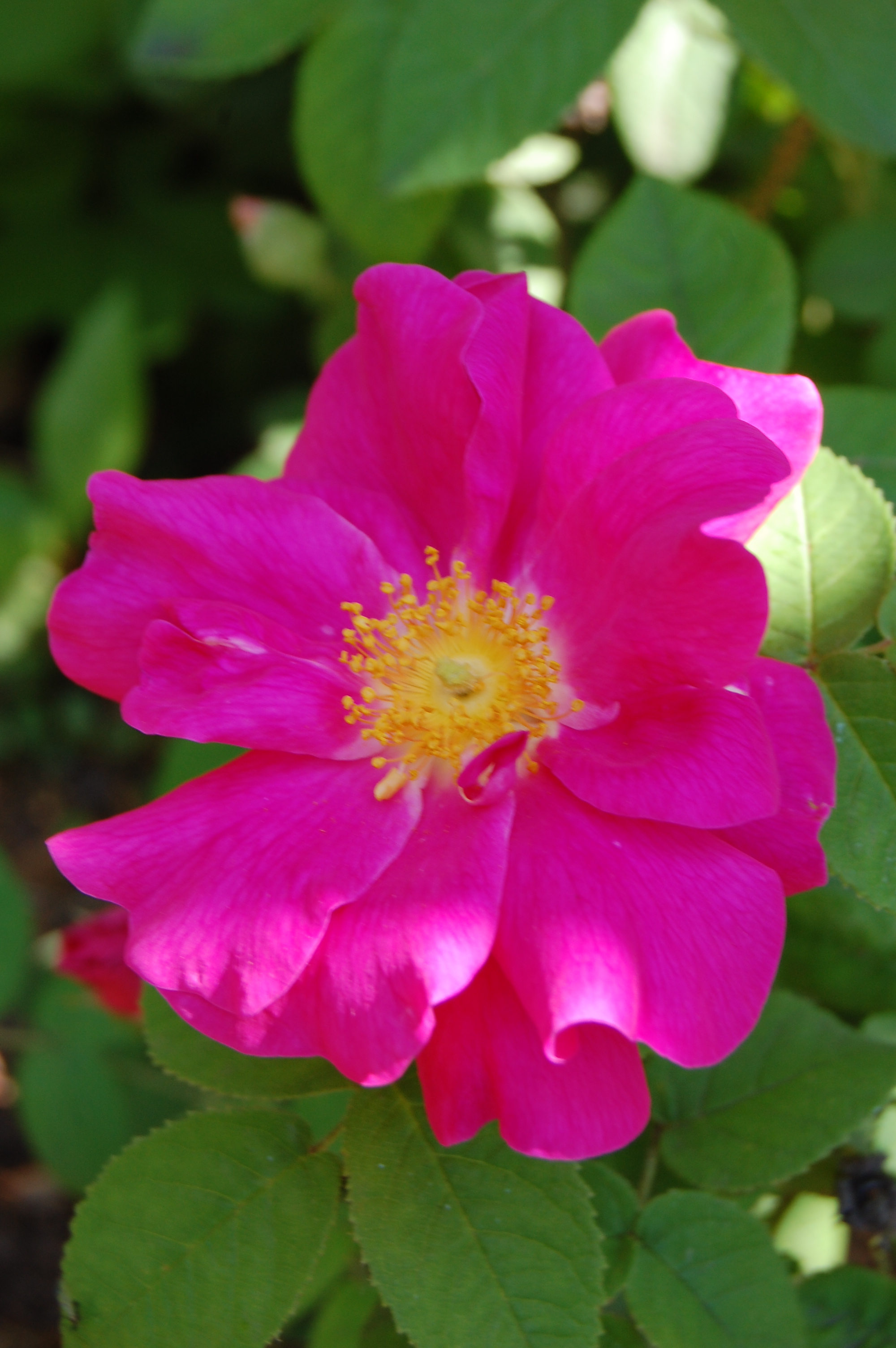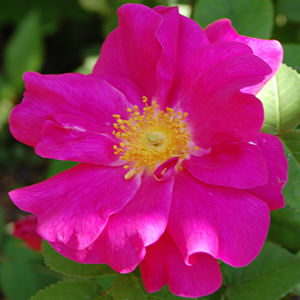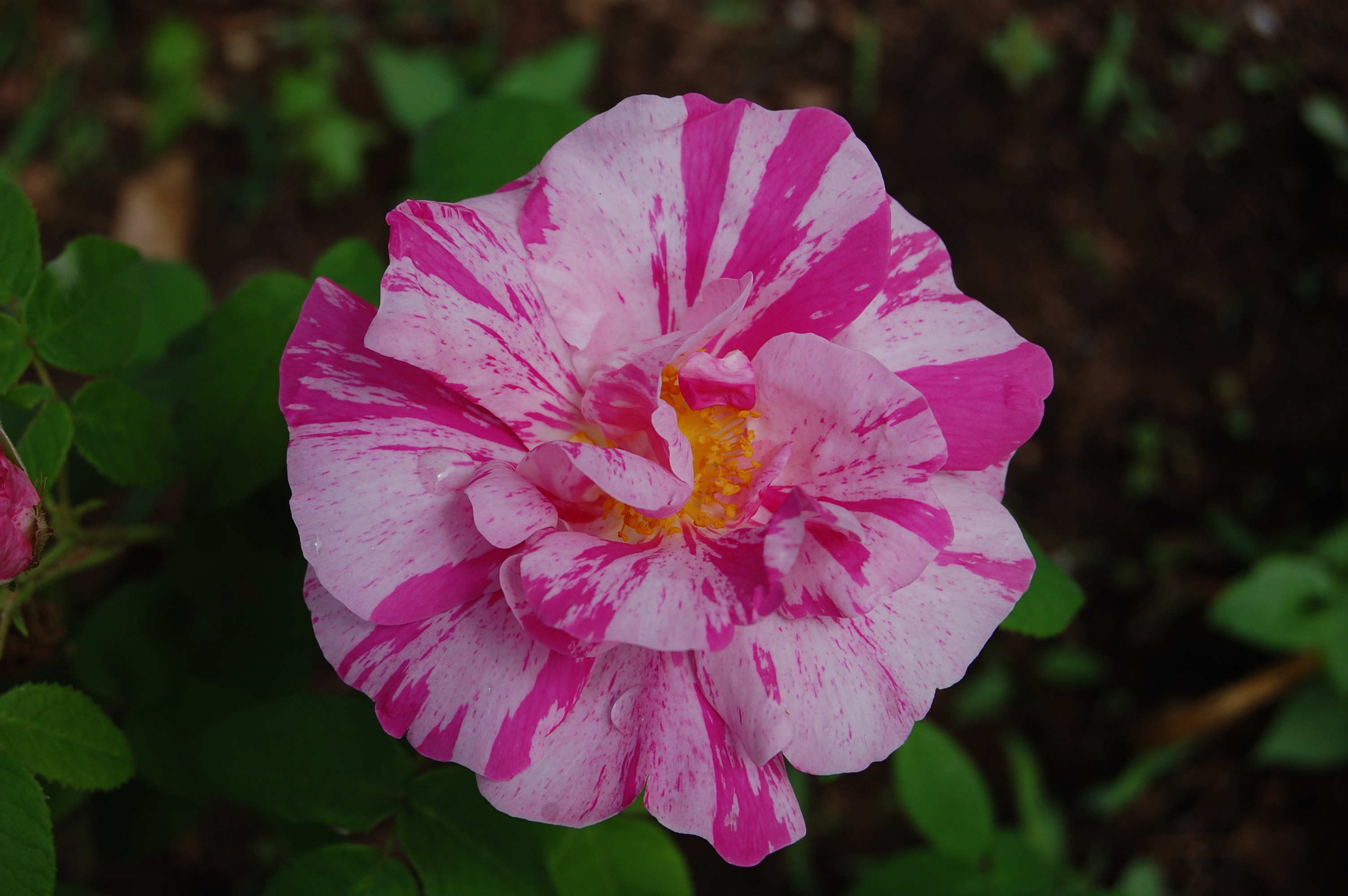
Have you ever wondered why you frequently see roses in herb gardens? Are roses considered herbs? And why is it always that ugly, shrubby rose that only blooms in the spring?
The answer lies in medieval history, specifically the time of the crusades. What we now call the Apothecary’s Rose is native to ancient Persia, an area now encompassed by Iran and Afghanistan. Amongst the many things that the crusading knights brought back from the Middle East were roses.

The roses, Rosa gallica var. officinalis, were considered valuable for their medicinal qualities rather than their beauty. There were no drugstores
in those times. Herb gardens were the pharmacies of medieval Europe. Monks, the apothecaries of the Middle Ages, prepared medicinal oils, powders, preserves and jellies from the petals of the rose bushes that they grew with their herbs.
It was also a time that knew no deodorants or sanitation. When dried, the strongly scented petals of the Apothecary’s Rose, were a welcome addition to potpourris used to mask the stench of everyday life. Dried petals were also rolled into beads and used in rosaries.
In England, the Apothecary’s Rose was adopted by the House of Lancaster as its symbol. Their rivals, the House of York, had a white rose as its symbol. Their struggle for power became known as the War of the Roses. Henry VII, in a gesture of peace, combined the two roses for what became known in heraldry as the Tudor Rose.

The Apothecary’s Rose is a small deciduous shrub, growing to about 4 feet high and spreads readily by suckers. It is one of the few roses that can tolerant light shade. Its branches are thickly covered with thorns. The flowers are a bright pink and either a single set of five petals or semi-double. The centers are golden yellow. Like all the older rose species, it flowers once in the spring. The blooms are followed by large orange or brown hips that are frequently made into jelly. The hips are an excellent source of vitamin C.
A sport of the Apothecary’s Rose, with red and white stripes, is known as Rosa mundi, named in honor of Fair Rosamond, the mistress of Henry II. According to legend, Rosamond was murdered by Henry’s jealous wife, Eleanor of Aquitaine, using a poison that was added to an oil made from the Apothecary’s Rose and the white rose that would become the symbol of the House of York.
Although we now get our medications from a drugstore, traditional herb gardens still include the Apothecary’s Rose in honor of its history and utility.
